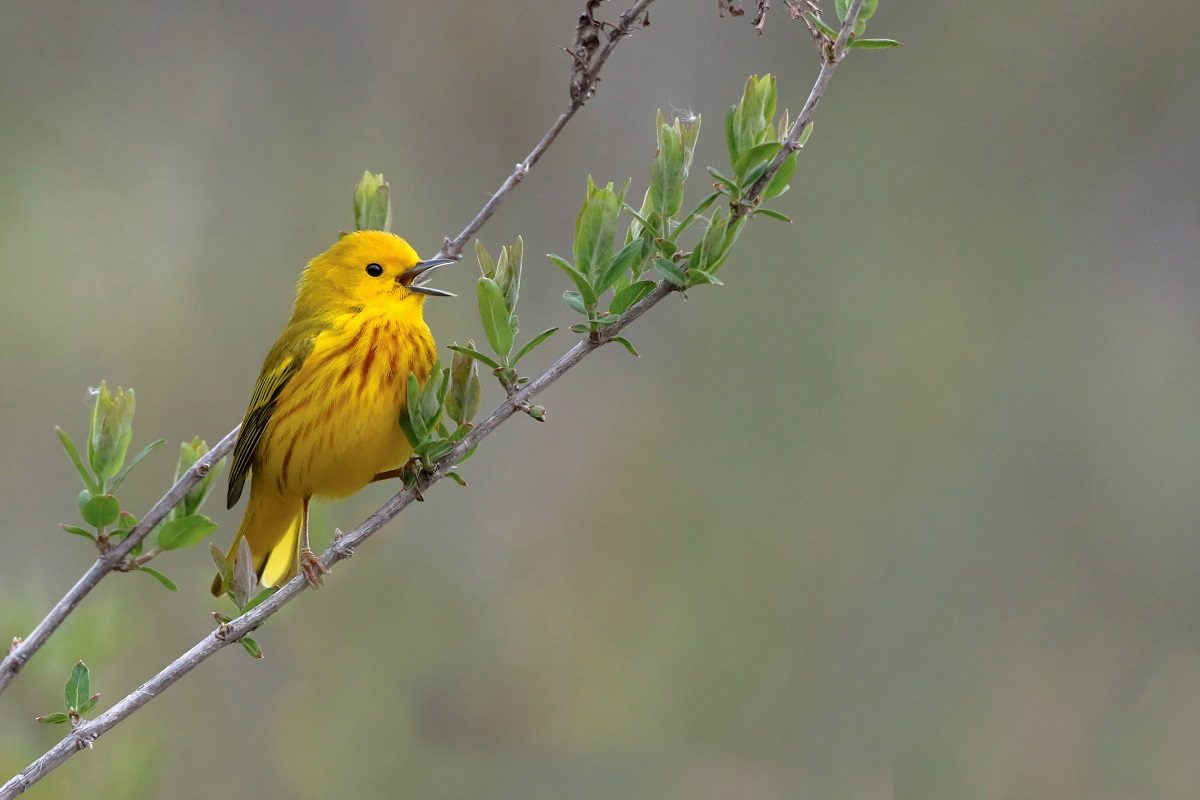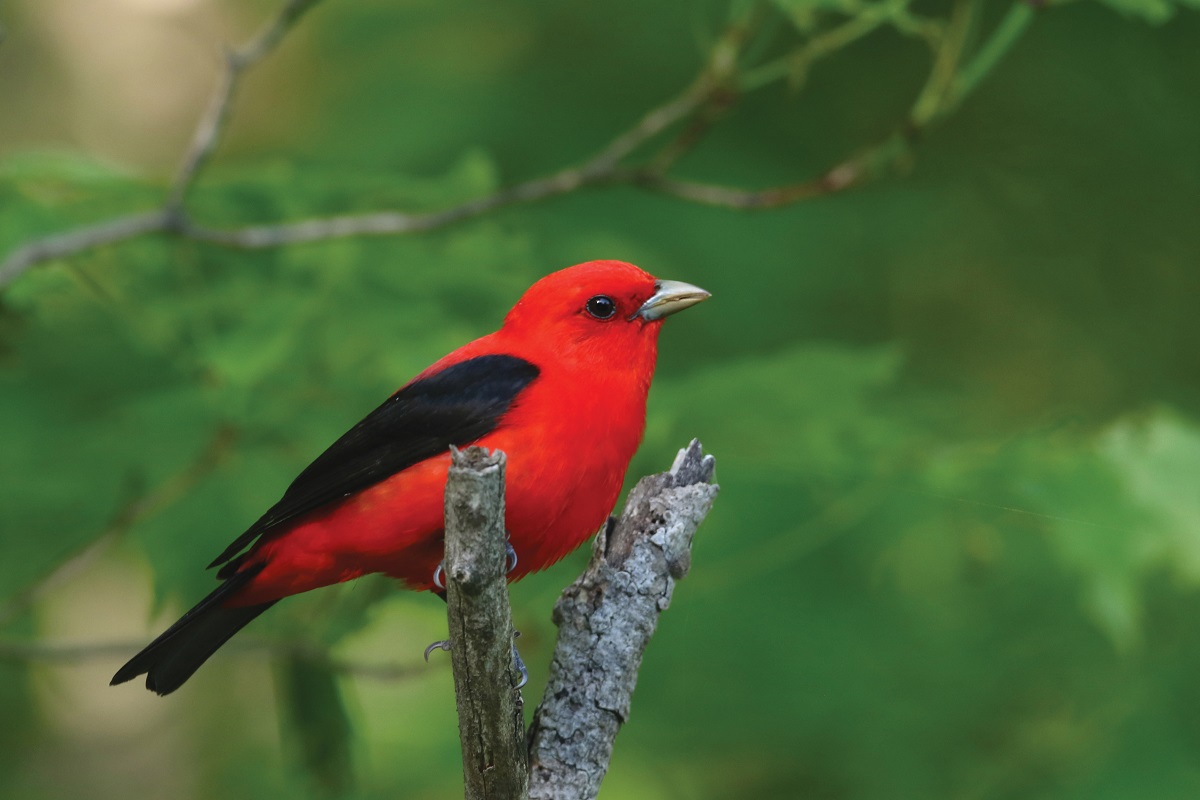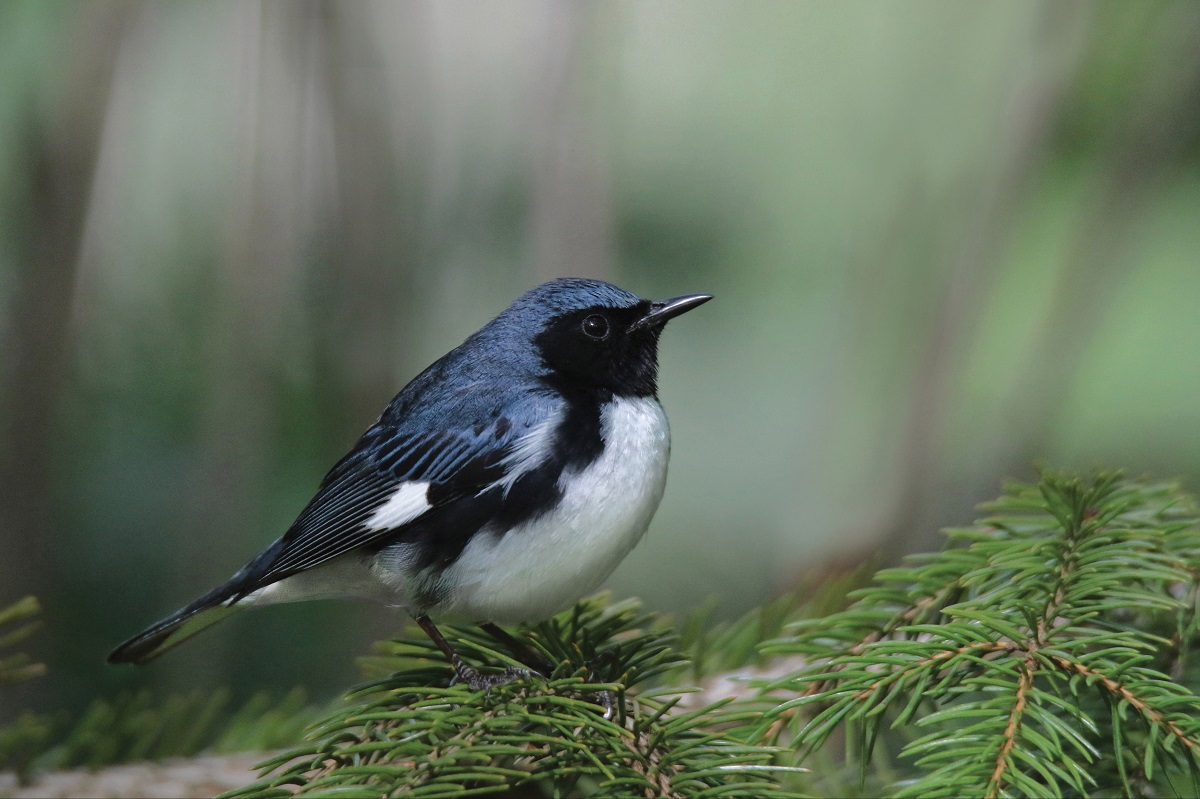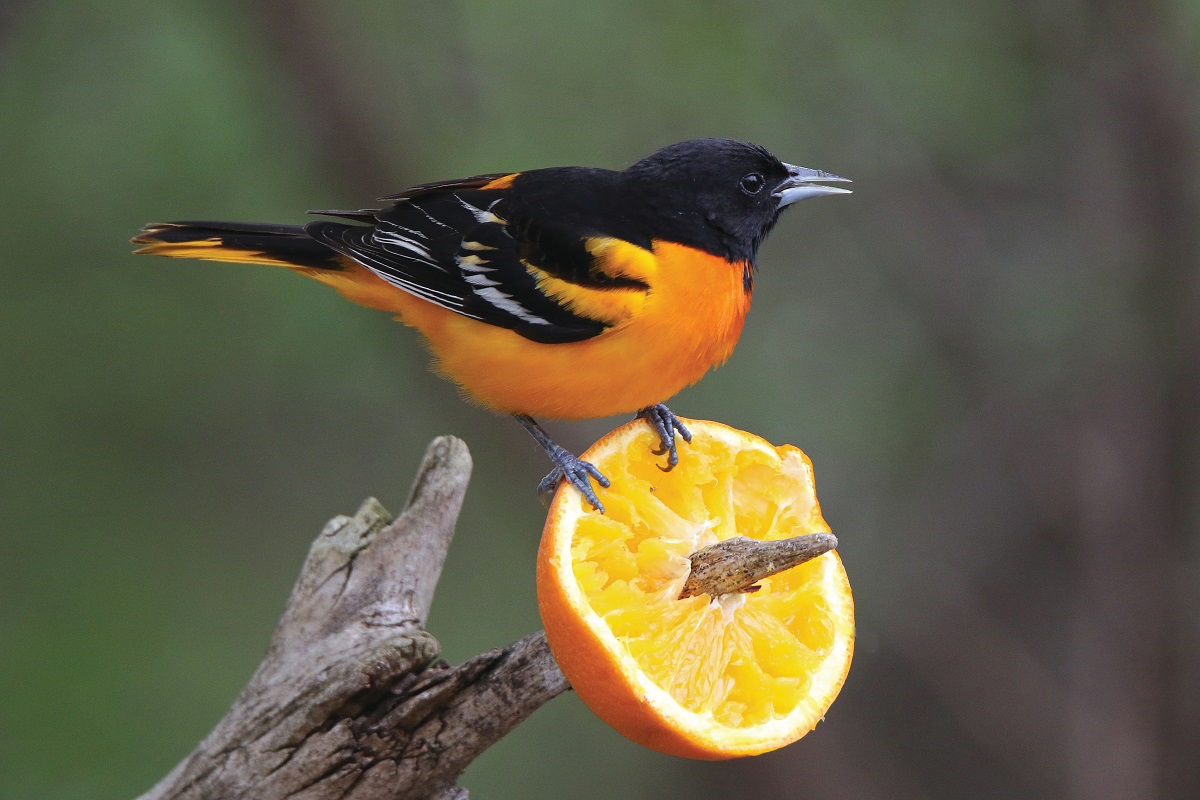By Brian Morin
They say beauty is in the eye of the beholder but when it comes to songbirds in spring, Mother Nature makes choosing favourites a challenge. The variety of species and colours is seemingly unending, with many looking like they have just arrived from a tropical paradise. Actually, that’s because they have.

Most of the birds in your neighbourhood and across the country spend the winter a long way from Canada. While some only head to the southern U.S., many more make their way into Central and even South America where they mingle with brightly-coloured tropical birds until they get the urge to head North once again. That urge is triggered by the angle of the sun, long before conditions in Canada would support an influx of small, insect-eating birds.
Another interesting thing happens as spring progresses north of the equator. The bodies of many male warblers, tanagers and other species that have been on vacation undergo a transformation. When they departed in the fall their appearance was drab, making them less visible to predatory birds. But as their feathers molt for the breeding season, they slowly don a vibrant look to attract a mate and help them ward off competing males. In fact, the change is so dramatic that many appear to be entirely new species.

The male Scarlet Tanager, for instance, looks more like a drab female down south but when it arrives in May it has shed its olive-coloured feathers to become the brilliant, black-winged red bird that we know and love. This is one of the most striking migrant songbirds in Canada. Its crimson plumage is so blindingly bright that often digital cameras have a hard time capturing the true colour. No photograph can do it justice.
The bird inhabits deep, mature forests where it utters its raspy Robin-like call from high in the trees. The song can have a ventriloqual quality, appearing to come from one location when it is calling from another nearby. Oddly enough, despite its striking appearance it is surprisingly difficult to see in the deep forest. The strategy is to follow the sound and look up … way up.
Thankfully, not all of our beauties are this hard to spot. The male Baltimore Oriole, with its black and orange markings, will often establish its territory in our yards and parks. His mate has duller plumage and usually weaves her sock-like hanging nest on the branch of a mature deciduous tree. The drooping boughs of willows are perfect for that.

Warblers, on the other hand, offer the greatest variety of colours and patterns of any songbird family. Over 30 species reach Ontario each May, with many heading into northern forests. That’s where the supply of insects is abundant during breeding season, essential for growing chicks. These tiny birds, smaller than sparrows, are a major attraction for visitors to parks along Lake Ontario, Lake Erie and Lake Huron when tens of thousands of people gather to witness the migration spectacle.
But migration is only the first chapter of the story. For birds it is all about breeding, which means brightly coloured males finding a suitable territory where they hope to attract a mate. These “butterflies of the bird world,” so-called because of their bright colours, each have a unique, sweet song that is meant to appeal to a prospective partner and to let potential interlopers know this territory is taken. A few seconds of song beats flying to and fro in an effort to defend one’s territory.

The most abundant and arguably the most familiar of them all is the Yellow Warbler. It inhabits bushes in yards and parks, along fields, forest edges or along the water. The male’s egg-yolk yellow plumage is accented by red streaks on the underparts. Go online to hear its perky song, sounding like “Sweet sweet sweet shredded wheat.” Even if you don’t remember it, I guarantee you have seen this bird. It’s everywhere.
It is easy to have an affinity for warblers. They are cute and interesting to observe, although they can be decidedly annoying when you are trying to take their picture. They won’t stop moving as they hunt for insects.
Most people have their favourites, from the dapper male Black-throated Blue Warbler, looking ready for a night at the Arts Centre, to the Blackburnian Warbler, dubbed “firethroat” for its flaming-orange throat that seems to glow, even in the rain. In migration you could find half a dozen species in a single tree. The arrival of the warblers means we have reached a climax in spring migration, the pinnacle of the movement. Some of these beauties move on while others remain, giving us a chance to enjoy them for a while before all take a well-deserved rest, after a hectic few weeks, until the chicks have flown.






